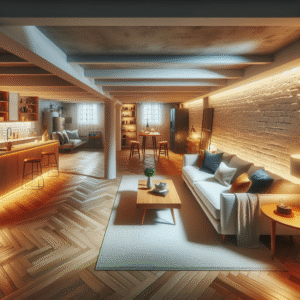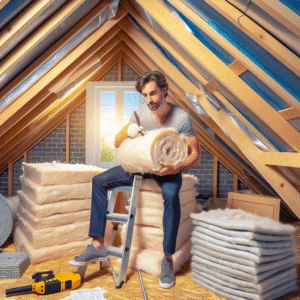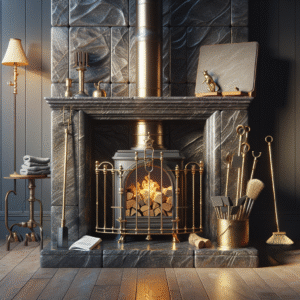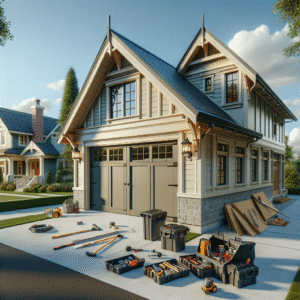Understanding the Importance of Storm Shelters for Home Safety
When a storm hits, safety becomes the top priority for every homeowner. Storm shelters are a critical addition to homes in areas prone to severe weather, providing a safe haven against dangerous conditions such as tornadoes and hurricanes. This makes understanding the role and benefits of storm shelters not just a precaution, but a necessity. In this guide, we delve deep into why every storm-prone home should consider investing in a robust storm shelter, the key features that define a quality shelter, and how it can even boost your property value. So, let’s gear up and explore how to enhance your home safety and secure your peace of mind during storm seasons.
Top 5 Features to Look for in a Quality Storm Shelter
Choosing the right storm shelter is paramount to ensure it meets the safety standards and suits your specific needs. Here are the top features to keep in mind:
- Durability and Resistance: The material should withstand extreme forces.
- Proper Ventilation: To ensure a safe breathing environment during use.
- Easy Accessibility: Quick and unobstructed access can be life-saving.
- Adequate Size: Enough space for the household and emergency supplies.
- Compliance with Safety Standards: Certification from recognized safety authorities.
How Installing a Storm Shelter Can Increase Your Property Value
Installing a storm shelter can be a significant investment, but did you know it can also increase your property value? Many potential homebuyers view a pre-installed storm shelter as a valuable addition, especially in regions frequently hit by severe weather. Not only does it enhance the safety features of your property, but it also makes it more appealing to safety-conscious buyers. In this segment, we’ll explore how a storm shelter can be a wise financial decision, beyond just the immediate safety benefits.
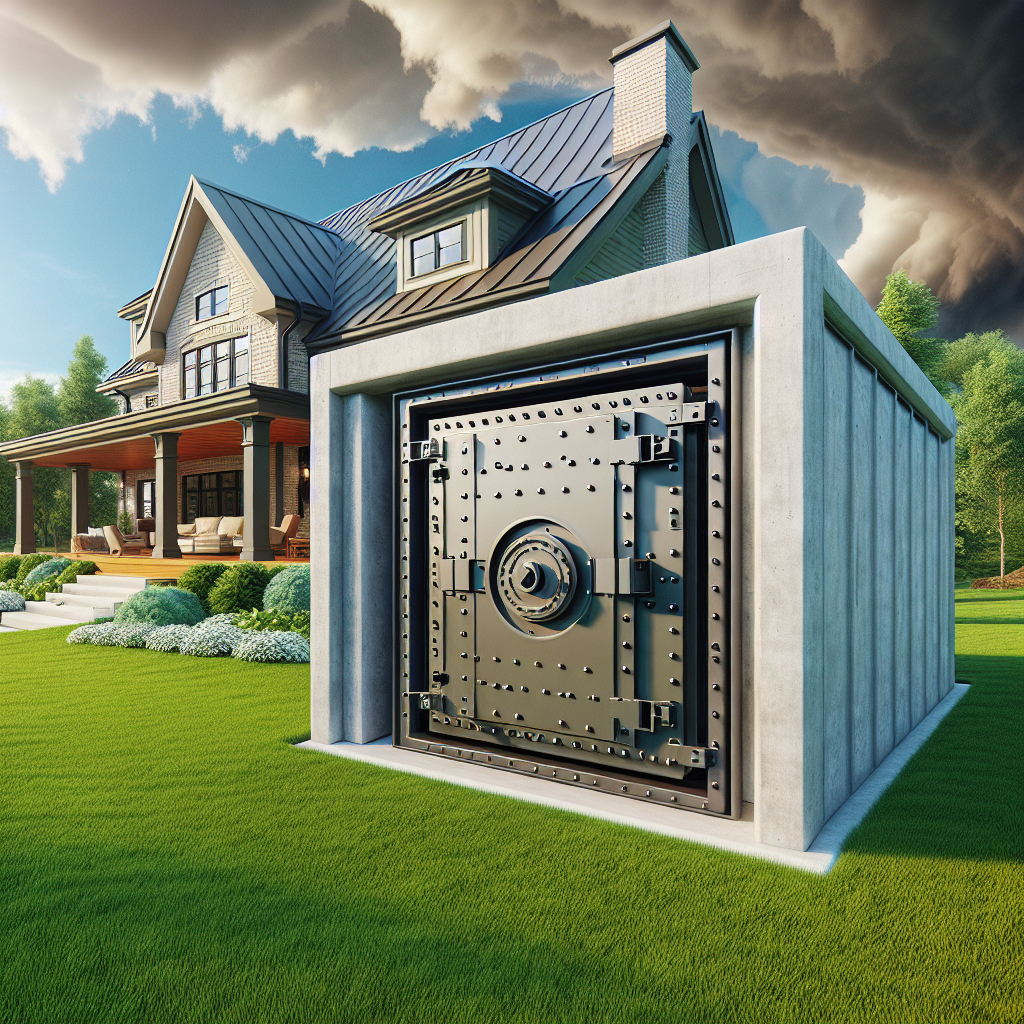
If you’re ready to take your home improvement or construction project to the next level, we can help! Find trusted contractors on BuildNet, whether you’re looking for renovations, new builds, electrical work, plumbing, or anything in between. Our directory connects you with qualified professionals who can make your vision a reality.
Understanding the Importance of Storm Shelters for Home Safety
Hey there! If you’re living in an area prone to severe weather, such as tornadoes or hurricanes, you’ve probably heard about storm shelters. But why are they so important? Let’s dive into the world of storm shelters and explore how they can be a game-changer when it comes to protecting your family and your home.
What is a Storm Shelter?
A storm shelter is a structure designed to provide protection against severe weather conditions, such as tornadoes, hurricanes, and other extreme weather events. These shelters are constructed to withstand high winds and flying debris, offering a safe haven during potentially life-threatening situations.
Key Reasons Why Every Home in Storm-Prone Areas Needs a Shelter
- Life-Saving Protection: The primary purpose of a storm shelter is to save lives. In areas where tornadoes or hurricanes are common, having a safe space that meets the Federal Emergency Management Agency (FEMA) guidelines can make all the difference.
- Peace of Mind: Knowing you have a secure place to go during a storm can significantly reduce anxiety and stress. It’s not just about physical safety; it’s also about emotional well-being.
- Accessibility: With a shelter right on your property, you can access it quickly, avoiding the need to travel during dangerous conditions.
Types of Storm Shelters
Storm shelters come in various forms, each with its own set of advantages. Here’s a quick breakdown:
- Underground Shelters: These are typically built below ground level, often in a backyard or under a garage. They’re excellent for protection from high winds and flying debris.
- Above-Ground Shelters: If you’re unable to have an underground shelter due to high water tables or other reasons, above-ground shelters are an effective alternative. Constructed with reinforced materials, they can offer the same level of protection.
- Safe Rooms: Built within the home, safe rooms can double as closets, pantries, or small rooms. They’re designed to meet FEMA standards and can provide a quick-access refuge without leaving your house.
Community Benefits of Storm Shelters
While the personal safety benefits of storm shelters are clear, they also provide significant community advantages:
- Reduced Strain on Emergency Services: With more people able to protect themselves, emergency services can manage resources better and focus on areas in dire need.
- Community Resilience: Communities equipped with adequate storm shelters can recover quicker from severe weather events, maintaining stability and supporting quicker economic recovery.
Considerations Before Installing a Storm Shelter
Before you decide to install a storm shelter, there are a few things you should consider:
- Location: Whether it’s above or below ground, the location of your shelter is crucial. It needs to be easily accessible during an emergency but also safe from potential hazards like flooding or fire.
- Size: Consider how many people need to be accommodated. Is it just for your family, or do you plan to offer refuge to neighbors as well?
- Regulations: Check local building codes and regulations. You might need certain permits, or there might be specific requirements for construction in your area.
Engaging with Local Experts
When it comes to building a storm shelter, it’s smart to engage with local experts who understand the specific needs and challenges of your region. Local contractors can offer insights into the best materials and designs to withstand local weather patterns. Plus, they can help navigate local building codes and regulations, ensuring that your shelter is not only safe but also compliant.
Remember, the goal is to protect what matters most—your family. While the idea of installing a storm shelter might seem daunting, the peace of mind and security it brings can be invaluable. Safety isn’t just a purchase; it’s an investment in your family’s future.
Stay safe and prepared! Whether it’s a tornado, hurricane, or another form of severe weather, having a plan and the right protection in place can make all the difference. Explore your options, consult with professionals, and take the necessary steps to ensure that when the weather turns, you’re ready.
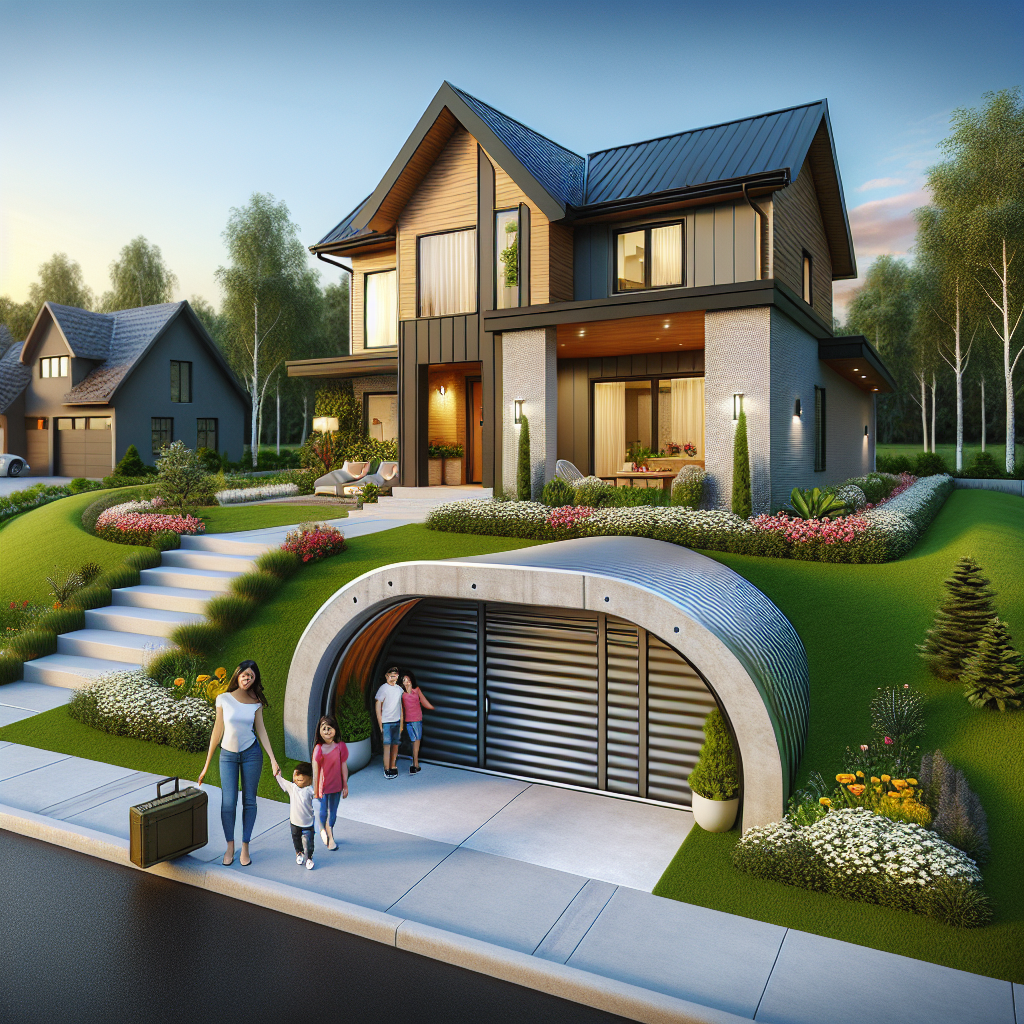
Top 5 Features to Look for in a Quality Storm Shelter
Hey there! Considering adding a storm shelter to your home? Smart move! Storm shelters are a fantastic way to protect your family from the unpredictable fury of Mother Nature. But before you dive into the installation process, let’s chat about the top features you should look for to ensure you’re investing in a quality storm shelter. Trust me, when the skies turn dark and the winds pick up, you’ll be glad you paid attention to the details!
1. **Robust Construction Materials**
First things first, the strength of your storm shelter is non-negotiable. Look for shelters made from high-impact materials like steel or reinforced concrete. These materials not only offer superior durability, but they also provide much-needed resistance against flying debris, which is a common hazard during severe storms.
Pro tip: Check for shelters that meet or exceed the standards set by the Federal Emergency Management Agency (FEMA) and the National Storm Shelter Association (NSSA). These certifications are your assurance that the shelter can withstand hefty blasts and extreme weather conditions.
2. **Adequate Ventilation**
Next up, ventilation. This might seem like a small detail, but proper air flow is crucial, especially if you find yourself hunkering down for several hours. A quality storm shelter should have a well-designed ventilation system that prevents the air inside from becoming stale. Additionally, it should protect against water ingress, which can become a serious issue during floods.
Look for shelters with vent pipes that are covered with protective grills or meshes. These help to keep out debris and small animals while still allowing air to circulate freely.
3. **Accessibility and Comfort**
Comfort might not be the first thing that comes to mind when you think of storm shelters, but it’s incredibly important. A good storm shelter should be easily accessible for everyone in your home, including those with disabilities. Features like handrails, non-slip floors, and adequate lighting can make a big difference in safety and comfort during a storm.
Also, consider the size of the shelter. It should be spacious enough to accommodate all family members and pets comfortably, along with a few emergency supplies. Remember, you might be inside for a while, so a cramped space can become uncomfortable quickly.
4. **Efficient Locking Mechanisms**
In the chaos of a storm, the last thing you want to worry about is the shelter door flying open. Quality storm shelters come equipped with heavy-duty locks that can withstand high winds and pressure differentials. These locking mechanisms should be easy to operate from the inside to prevent anyone from being accidentally locked out—or in.
Moreover, some high-end models feature smart locks that can be integrated with your home security system for an added layer of safety.
5. **Waterproofing and Corrosion Resistance**
Last but not least, make sure your storm shelter is built to resist water and corrosion. This is particularly crucial if you’re installing an underground shelter. Over time, exposure to soil and water can degrade materials, leading to leaks and structural weaknesses.
Choose shelters that are coated with waterproof sealants and built with corrosion-resistant materials. This will not only extend the life of your shelter but also ensure it remains a safe, dry, and secure place when you need it most.
Now that you’re armed with this knowledge, you can make an informed decision about the storm shelter that’s right for your home. Remember, a well-built storm shelter is an investment in your safety and peace of mind. So, don’t cut corners—opt for quality and durability to keep your loved ones safe during the stormiest of times!
How Installing a Storm Shelter Can Increase Your Property Value
Hey there, homeowner! Thinking about adding a safety feature that not only keeps you snug and secure during menacing weather but also boosts your property’s market value? Well, installing a storm shelter might just be the move for you. Let’s dive into how this addition can be a game-changer for both your peace of mind and your property’s worth.
Boosting Appeal to Safety-Conscious Buyers
First off, safety sells. In regions frequently visited by severe weather, homes equipped with storm shelters stand out in the real estate market. This feature is especially appealing to buyers with families, or those who prioritize safety above everything else. By presenting your home as a safe haven, you’re not just offering a place to live, but a secure environment. This can significantly reduce the time your property spends on the market and potentially fetch a higher selling price. Remember, it’s all about giving potential buyers what they can’t easily find elsewhere.
Reducing Insurance Premiums
Here’s something you might not have considered: some insurance companies offer reductions on premiums for homes with built-in safety features like storm shelters. Why? Because it reduces the risk they have to insure. Lower insurance costs make your property more attractive to savvy buyers who look beyond just the purchase price. Highlighting this during a sale can catch the eye of budget-conscious buyers who see the long-term savings in operating costs.
Modern Storm Shelters: Aesthetic and Functional
Gone are the days when storm shelters were unsightly bunkers that stuck out like sore thumbs. Today’s shelters can be sleek, designed to blend seamlessly with your home’s aesthetics. Think about it: a shelter that doubles as a functional basement space or a stylish outdoor feature can be a huge selling point. Home buyers love multi-functional spaces, and a well-integrated storm shelter could be just the feature that tips their decision in your favor.
Customization Is Key
When you install a storm shelter, consider customization options that complement your home’s design. Whether it’s embedding it within the garage, under a staircase, or even in the backyard as part of a garden layout, these smart placements can enhance the overall functionality and appeal of your home.
Incremental Value Increase
Let’s talk numbers. While the exact figures can vary, numerous real estate experts suggest that homes with storm shelters can see an increase in property value by 3-5%. This might not sound like a lot at first glance, but on a $300,000 home, that’s an increase of up to $15,000. Not too shabby for a feature that offers practicality beyond just financial value. Plus, in storm-prone areas, this feature can make your home a hot commodity.
Perceived Value vs. Actual Cost
It’s crucial to balance the cost of installing a storm shelter with the actual value it adds to your property. The good news is that modern storm shelters can be installed at relatively reasonable costs, depending on the type and size. Moreover, seeing this feature already installed saves potential buyers the hassle (and expense) of doing it themselves, which can make your home even more attractive.
Seek Expert Advice
Before you dig in, it’s a wise move to consult with a local real estate agent or a property valuation expert. They can provide insights tailored to your specific area and market conditions, ensuring that your investment is sound.
Local SEO Benefits
If you’re selling your home, listing it as having a storm shelter can also boost your visibility in local search results. Terms like “homes for sale with storm shelters in [Your City]” are likely to attract attention. For those of you in storm-prone areas, this can be a crucial detail that sets your listing apart from others in search engine results.
Conclusion
In essence, adding a storm shelter is not just about immediate safety—it’s a strategic move that can enhance your home’s marketability and value. Whether you’re in Tornado Alley or an area where severe weather is less common, this feature speaks volumes about your commitment to safety and can be a real estate goldmine. So, why not give your home that extra edge in the competitive market while ensuring you and your loved ones are protected? After all, the best investments are those that bring both peace of mind and financial returns.
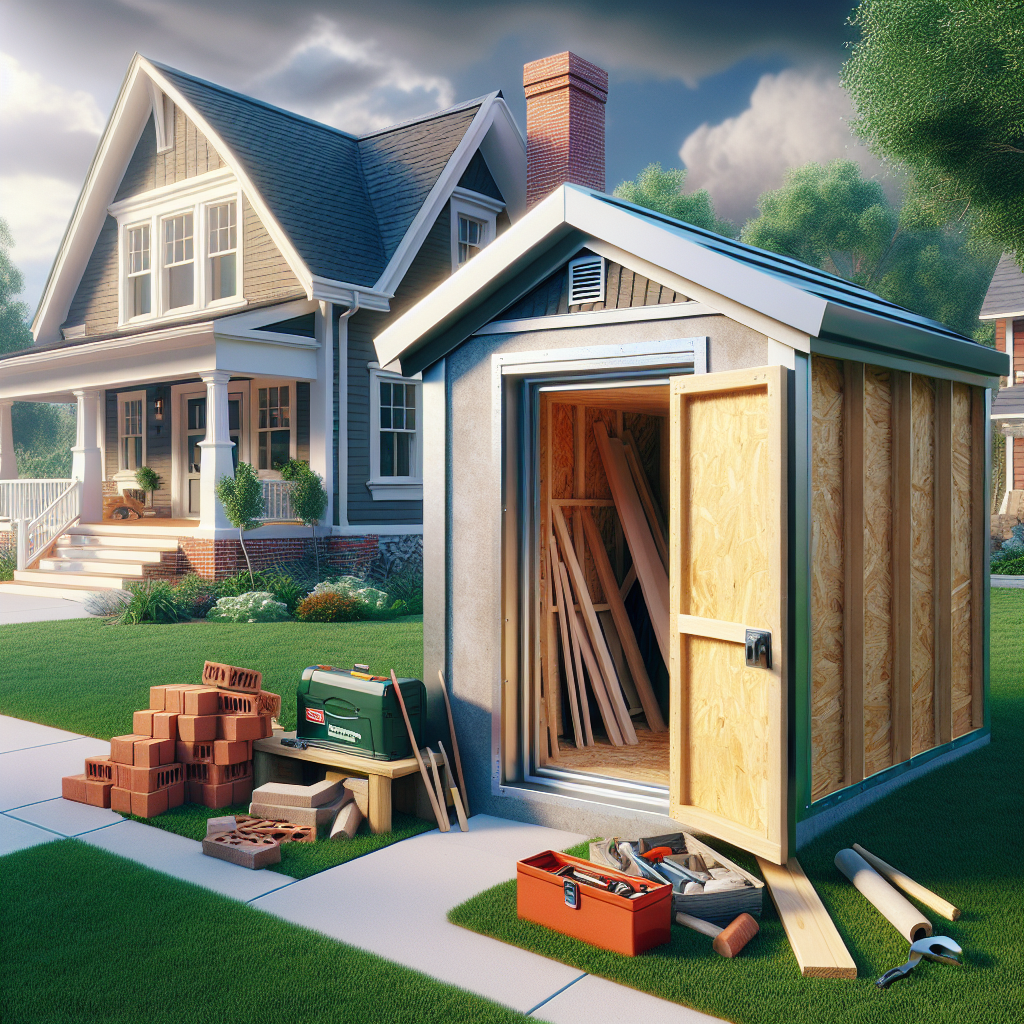
FAQ: Everything You Need to Know About Storm Shelters
What is a storm shelter and why is it important for home safety?
A storm shelter is a structure designed to protect individuals from extreme weather events such as tornadoes or hurricanes. These shelters are crucial for home safety, especially in areas prone to such natural disasters. They provide a secure environment where families can seek refuge during severe storms, ensuring their safety from potential harm caused by high winds and flying debris.
What are the top features to look for in a quality storm shelter?
- Material Strength: Look for shelters made from reinforced steel or concrete, which offer the best protection against debris and high winds.
- Proper Ventilation: Adequate air flow is essential to ensure comfort and safety while using the shelter.
- Easy Access: The shelter should be easily accessible from within your home to ensure quick entry during emergencies.
- Compliance with Safety Standards: Ensure the shelter meets FEMA and ICC-500 standards for design and construction.
- Size and Capacity: Consider the size of your family and choose a shelter that can accommodate everyone comfortably.
How can installing a storm shelter increase my property value?
Installing a storm shelter can significantly increase your property value, particularly in regions frequently hit by severe weather. It enhances the appeal of your home to potential buyers who value safety. Additionally, some insurance companies may offer lowered premiums for homes equipped with storm shelters, making it a financially beneficial investment.
Are storm shelters only necessary in certain areas, or should everyone consider one?
While storm shelters are more common in areas known for severe weather, such as Tornado Alley in the USA, they can be beneficial for almost any region. Climate change has led to unpredictable weather patterns globally, making it wise for everyone to consider a shelter as part of their home safety planning.
What is the average cost of installing a storm shelter?
The cost of installing a storm shelter can vary widely based on size, materials, and whether it’s an above-ground or underground model. Prices generally range from $3,000 to $10,000. Custom features and larger sizes can increase the cost accordingly.
Can I install a storm shelter in my existing home?
Yes, storm shelters can be added to existing homes. Both underground and above-ground options can be installed, depending on the home’s structure and the homeowner’s preferences. Professional installation is recommended to ensure the shelter complies with all safety standards and effectively provides protection.
What maintenance is required for a storm shelter?
Maintenance for a storm shelter is generally minimal but crucial. It includes regular checks for leaks or corrosion, ensuring the door and ventilation systems work correctly, and keeping the path to the shelter clear of obstructions. Annual inspections by a professional can help ensure the shelter remains in good condition and ready for use at any time.
Is financing available for storm shelter installations?
Many companies that install storm shelters offer financing options to help manage the cost. Additionally, some local governments provide grants or incentives for residents to install storm shelters, especially in high-risk areas. It’s worth researching local options for financial assistance.
How do I choose the right location for my storm shelter?
The ideal location for a storm shelter in your home depends on several factors, including your property layout and the shelter type. Underground shelters are typically installed in the yard or under a garage, while above-ground shelters can be integrated into a basement or attached to an existing home structure. Safety, accessibility, and ground stability are key considerations when choosing the location.
Conclusion
Installing a storm shelter in your home not only ensures the safety of your family during severe weather events but also increases your property value. As you consider this vital addition to your home, remember that the best shelters are those that meet strict safety standards, offer enough space for your family, and are easily accessible during emergencies. If you’re ready to add this important feature to your home, or if you have more questions about storm shelters, don’t hesitate to contact a professional contractor through the BuildNet website. Our network of experienced contractors can provide you with a free quote and guide you through every step of the installation process. Remember, taking action now can provide you with peace of mind when the next storm hits.

